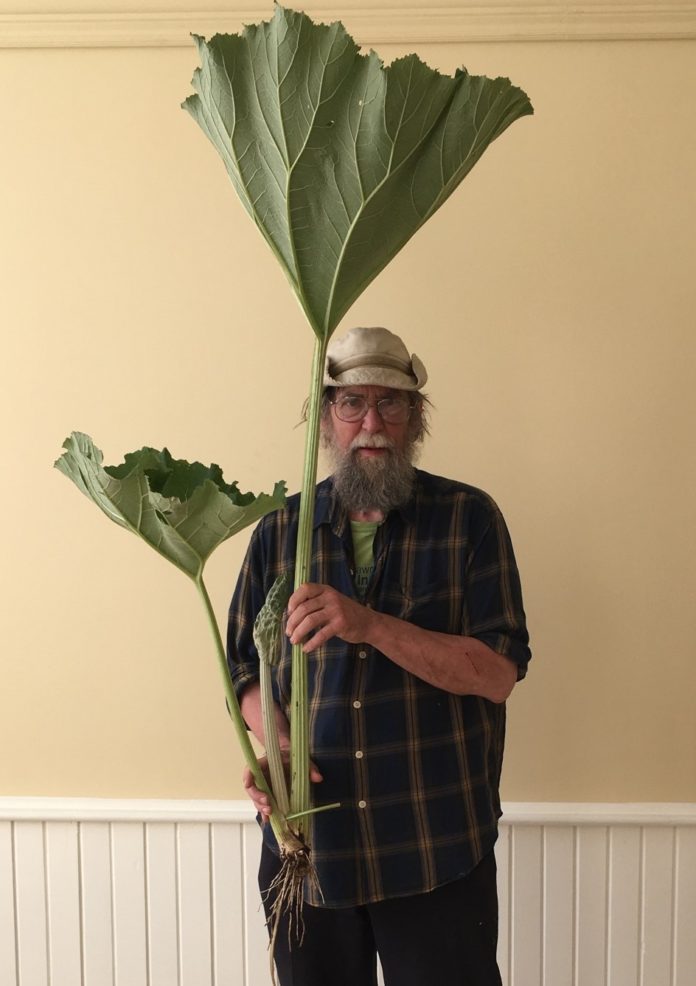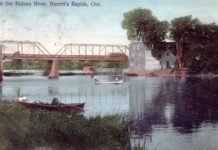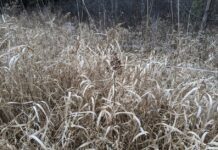The rehabilitation of the swing bridge in Burritts Rapids this Summer also contributed to the protection of local plant life. The project included repairs to the structural steel and masonry abutments, as well as a replacement of the timber bridge deck. The bridge was also sandblasted and completely repainted.
The Burritts Rapids swing bridge rehabilitation is one of a number of projects Parks Canada has been undertaking along the Rideau Canal, and, as part of this work, Parks Canada undertakes an environmental impact analysis, to make sure any construction done at the site is carried out in an environmentally sound way.
When they carried out the analysis at the Burritts Rapids swing bridge, they found an exotic species of plant, called the Butterbur, that had taken over much of the north abutment, some of the south, and had spread down stream. The Butterbur is a plant also known as Petasites, or Coltsfoots. They are perennial plants with thin, creeping underground rhizomes and large rhubarb-like leaves during the growing season. Local biologist, Dr. Fred Schueler, says the plants that were found in Burritts Rapids were most likely Petasites japonicus, which is native to China, Japan, Korea and Sakhalin. It was introduced into southern British Columbia by Japanese immigrants. There is also a native form of Petasites called Petasites frigidus, which have smaller leaves and different flowers.
According to Environmental Assessment Scientist, Valerie Minelga, from Parks Canada, not all exotic species are invasive. However, by looking at how the Butterbur had taken over the area around the swing bridge, it was concluded that it was a threat to the native species along the riverbank. “It was identified as a risk,” she says. “Its big leaves block out any other sort of vegetation.”
The disturbance of the area surrounding the bridge caused by construction could also contribute to the Butterbur spreading further, choking out native vegetation along the river. “Because we noticed the invasive species, we saw the opportunity to improve the overall health of the site,” Valerie says.
Fred Schueler was also alarmed to see the large stand of Butterbur in Burritts Rapids. “Once a plant starts spreading seeds around, it can move a lot faster than it does by vegetative spread,” he says. “Also, sexual reproduction allows selection for variants better adapted to local conditions than the original introduction was, and there’s often exponential increase in invasive species after several generations of adaptation to the local environment.”
To address the Butterbur problem, and keep it from spreading, all the plants, including their roots and rhizomes, were removed from the area and replaced by native grasses and plants. “We not only controlled and removed the invasive Butterbur, but gave the native species a head start,” Valerie says.
Parks Canada has invested $3 billion in infrastructure renewal projects along the Rideau Canal, Trent Severn Waterway, and across the country. Valerie says that, with all their projects, they make an effort to protect ecosystem resilience. “All assets need renewal, and it is an opportunity to have a conservation gain,” she says. Parks Canada will be monitoring the area to make sure the invasive Butterbur doesn’t return and put the native flora at risk once again.









